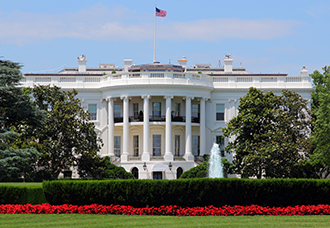
What the Trump Administration’s First 100 Days Mean for Employers
In the past, the first 100 days of a new President’s administration have been used as an indicator of where legislative policies and executive priorities are headed for the remainder of the term. After the first 100 days of the Trump White House, however, many are still unsure what the administration’s labor and employment positions and initiatives will look like between now and 2020.
The Department of Labor was without a Secretary until Alex Acosta was appointed on the 99th day of the administration. Acosta, a former federal prosecutor and former member of the National Labor Relations Board, indicated in his confirmation hearing that he was in favor of increasing the threshold for overtime pay but acknowledged that the new threshold established last year (and not yet implemented due to a federal court injunction) might be disruptive to businesses. He noted that he might be open to a less-disruptive cost of living adjustment instead but would not be pinned down by the senators’ questioning.
The President inherited two vacancies at the NLRB but (as of the date we are writing this) has not yet made any nominations.
President Trump has rolled back several employment regulations such as OSHA’s so-called “Volks” rule, which addressed enforcement of employers’ ongoing obligation to maintain accurate records of work-related injury and illness data, and the “blacklisting rule” that was intended to prevent the government from contracting with businesses responsible for wage theft or workplace safety violations within the last three years.
The President’s “Buy American and Hire American” Executive Order, signed on April 18, 2017, instructs the Attorney General and the Secretaries of Labor, State, and Homeland Security to propose new rules and guidance to achieve reforms to ensure that H-1B visas (a non-immigrant visa that allows US companies to employ graduate level workers in specialty occupations that require expertise in fields such as IT, finance, accounting, architecture, engineering, mathematics, science, medicine, etc.) are awarded to only the most-skilled or highest-paid beneficiaries. Major changes to the H-1B program will likely require legislation or regulation. This could take quite some time so current rules governing these employment-related immigration visa programs should remain in effect for now.
Congress is now in session in Washington until the next recess in August. The summer legislative session should be informative, though it remains unclear whether any movement will occur on issues most important to employers as healthcare and tax reform appear to be taking the immediate forefront.